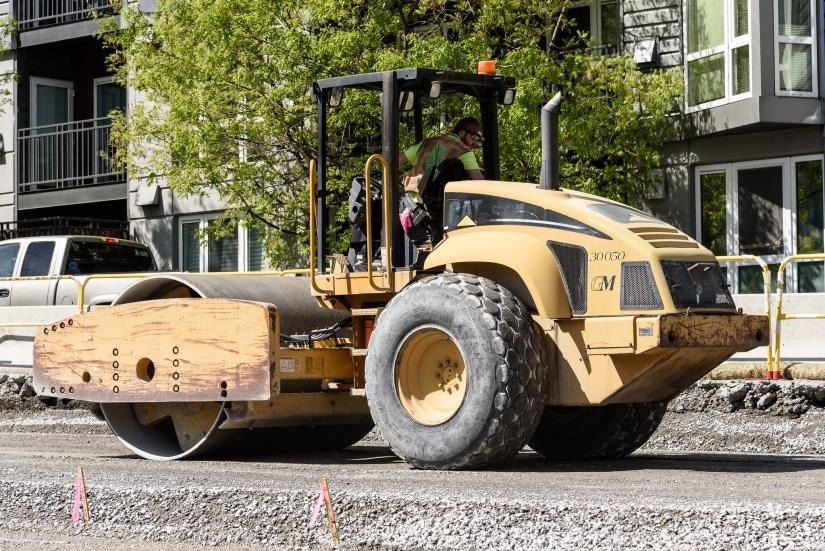Researchers have created an “intelligent compaction” technology that can evaluate the quality of road base compaction in real time and is integrated into a road roller. Roads can become safer and more durable with improved road construction, which can also lower maintenance costs and pothole counts.

A vibratory roller compacts the road bed. Image Credit: Washington State Dept of Transportation/Flickr
Months of persistent rain and flooding have brought home how crucial good road building is, since it prevents potholes and road sinking. Tire blowouts and structural damage to automobiles and trucks are both spurred by this, and the likelihood of fatal accidents also rises.
A study team from the University of Technology Sydney created the ground-breaking machine-learning method, which analyzes data from a sensor attached to a construction roller. Leading the study were Associate Professor Behzad Fatahi, Head of Geotechnical and Transport Engineering, Professor Hadi Kahbbaz, Dr. Di Wu, and Ph.D. student Zhengheng Xu.
We have developed an advanced computer model that incorporates machine-learning and big data from construction sites to predict the stiffness of compacted soil with a high degree of accuracy in a fraction of second, so roller operators can make adjustments.
Behzad Fatahi, Head, Geotechnical and Transport Engineer and Associate Professor, University of Technology Sydney
Three or more layers are rolled and compacted to form roads. Typically, soil makes up the subgrade layer, which is then covered with materials like crushed rock, asphalt, or concrete. Under- or over-compacted materials are possible as a result of the varying nature of soil and moisture conditions.
Fatahi added, “Like Goldilocks, the compaction needs to be ‘just right’ to provide the correct structural integrity and strength. Over-compaction can break down the material and change its composition, and under-compaction can lead to uneven settlement.”
“A well-compacted multi-layer road base provides a stable foundation and increases the capacity of a road to bear heavy loads. Trucks can weigh up to 40 tons, so a poor-quality base can quickly lead to cracks and weak spots in the asphalt surface,” stated Fatahi.
According to research that was just published in the peer-reviewed journal Engineering Structures, the use of this technology could aid in the construction of more resilient roads that can endure extreme weather.
The team is currently looking to test the new technology on-site for different ground and roller conditions for road, railway, and dam construction projects. They are also looking into methods to measure the density and moisture content of the compacted soil in real-time while construction is taking place.
Journal Reference
Xu, Z., et al. (2022) Double-layered granular soil modulus extraction for intelligent compaction using extended support vector machine learning considering soil-structure interaction. Engineering Structures. doi:10.1016/j.engstruct.2022.115180